Similar to the previous year, this summer as well, the Nature Conservation Agency extends an invitation to all nature enthusiasts to participate in a range of thrilling nature exploration events that are organized as part of the LIFE for Species project. While some events have already concluded, there are still opportunities this summer to attend many other.
We encourage you to keep an eye out for updates on the project's social media channels and the Nature Conservation Agencies Facebook page.
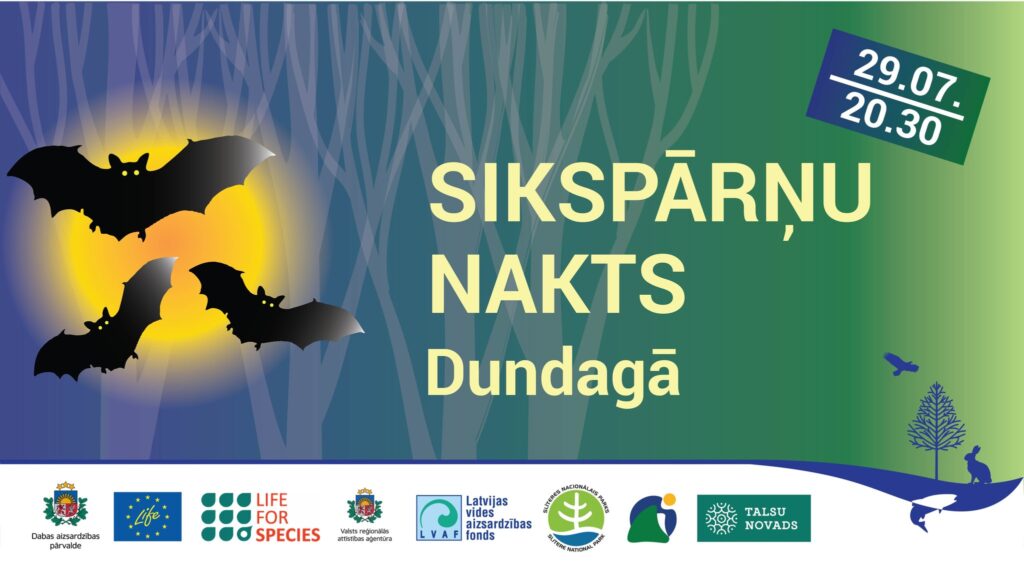
Currently, registration is open for the second Bat event, which will take place on July 29th in the vicinity of Slītere National Park, near Dundaga. In August, there will be events dedicated to moths in Slītere, butterflies in Gauja National Park, caterpillars in Līgatne Nature Trails, and many more.
Stay tuned for updates and see you at the nature exploration events!
In mid-July, a successful nature expert seminar on the identification and conservation of endangered vascular plant species was held, organized jointly by the Nature Conservation Agency and Daugavpils University as part of the LIFE for Species project.

Throughout the training, lecturers from the LIFE FOR SPECIES project and Daugavpils University provided theoretical lectures on identifying and conserving rare plant species. They also led practical sessions in the natural habitats of these species and at the Daugavpils University's Study and Research Center in Ilgas.
During the sessions, participants had the opportunity to work with the university herbarium materials, allowing them to learn to recognize over 30 endangered species discussed during the seminar.
Many of the species showcased during the seminar are found only in specific and often remote locations in Latvia. As such, the use of the herbarium in the training provides a unique opportunity to view and study these species collectively.

Jēkabs Dzenis, the coordinator of the LIFE FOR SPECIES project, pointed out: "Improving the skills for identifying endangered and protected species not only enhances the expertise of nature experts but also facilitates obtaining more accurate information about the distribution of these species."
Venturing into summer adventures, nature can become our guide, introducing us to its treasures and wonders. One such marvel is our featured species this month - the Shingled Gladiolus (Gladiolus imbricatus L.).
Observant nature enthusiasts may have already noticed the blooming of these protected gladiolus plants in the "Eglone" nature reserve in Jēkabpils district this year. Thanks to the management efforts by the Latvian State Forests, a favorable environment was created for the rare gladiolus habitat, resulting in a resurgence of numerous gladiolus findings.
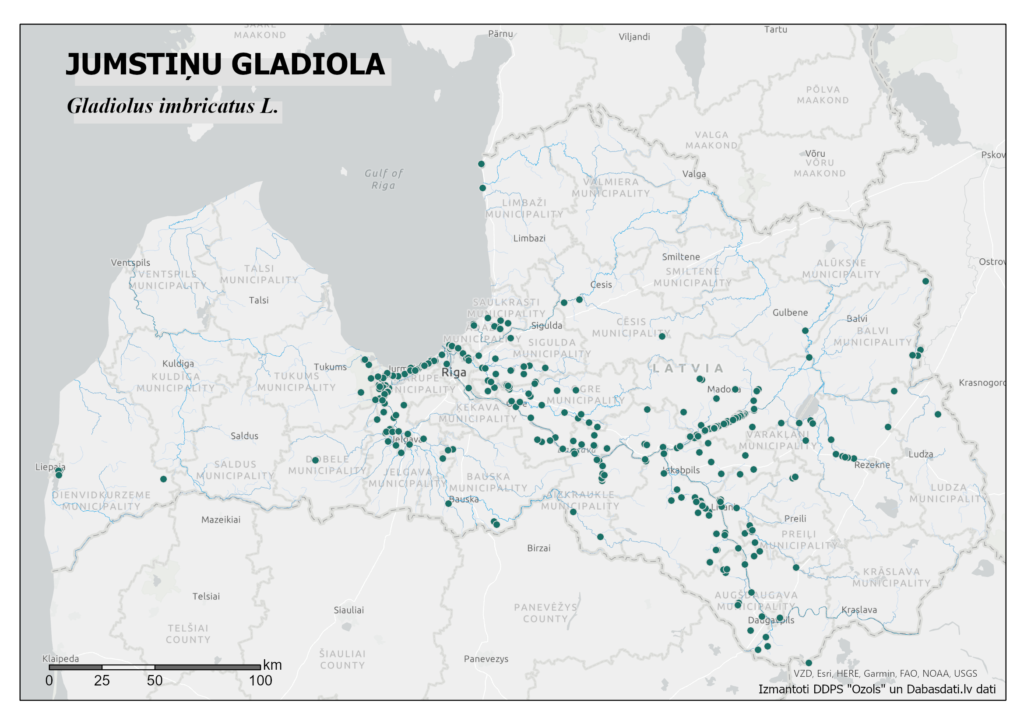
The Shingled Gladiolus is a perennial plant from the iris family, capable of reaching a height of up to 70 cm. Its flowers are beautifully adorned in various shades of violet-red. Despite their decorative allure, we strongly urge people to treat these plants with care, refraining from plucking them and avoiding any attempts to transplant these beautiful specimens into private gardens.
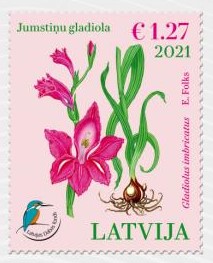
The Shingled Gladiolus blooms in June and July, and it can be found in moist and marshy meadows, grasslands, and occasionally in moderately moist meadows, shrubs, forest edges, and ditches along forest paths, and very rarely in drier areas.
Plant enthusiasts and philatelists may recognize this striking species, as it was honored with a Latvian postage stamp in 2021.
If you happen to come across the Shingled Gladiolus during your nature excursions, please report your observation to the Nature Conservation Agency or the website Dabasdati.lv. We would be delighted to receive news and photographs of sightings on our Facebook page as well.
In the month of July, the LIFE for Species projects traveling photo exhibition "Green Treasures" is on display at the VEF Culture Palace. This exhibition showcases various rare, endangered, and protected species through photographs. It will be open for viewing in the VEF Culture Palace's mirror hall until July 30th.
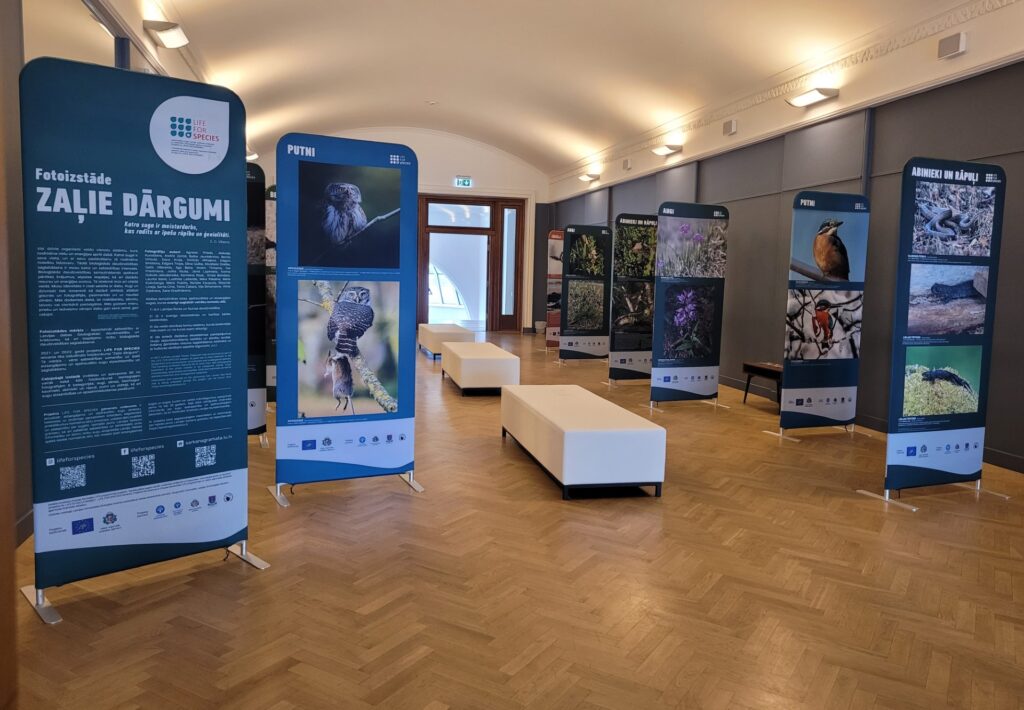
The traveling exhibition presents 60 photographs of different rare, endangered, and protected species, along with information on how each of us can contribute to species conservation.

We express our sincere gratitude to VEF Culture Palace for their prompt responsiveness and collaborative efforts.
Interested parties who wish to host the traveling photo exhibition are invited to contact madara.eihe@lu.lv.

On June 28th and 29th, a training session on insect diversity was held as part of the LIFE for Species project. The training seminar was organized to educate experts on invertebrate diversity and conservation.
During the training, the experts in invertebrate biology from the LIFE FOR SPECIES project, Nikolajs Savenkovs and Uģis Piterāns, provided insights into the diversity, identification, and conservation of invertebrates. They introduced various freely accessible resources used for insect identification and research.
The participants had the opportunity to explore and try out different terrestrial and aquatic invertebrate research methods during practical sessions. They also learned the principles of invertebrate species identification in an improvised laboratory setting.
Using pheromone traps, the participants made a significant discovery during the practical sessions - the glass-winged moth Sesia bembeciformis. This finding marked only the second time this species has been recorded in Latvia and the first time in the Vidzeme region.
Invertebrates represent the most diverse group of living organisms in terms of species count. One of the major challenges in their conservation is the lack of data on their distribution and a shortage of specialists. Therefore, the goal of this seminar was to enhance the knowledge of naturalists in invertebrate biology, thus improving the content of nature exploration events and fostering greater public interest and involvement in invertebrate conservation.
Photos: Andris Soms, Jēkabs Dzenis
The participants in the training represented various nature centers and institutions, including the Nature Conservation Agencies nature centers, the National Botanic Garden, the Latvian State Forests, the Liepāja Science and Education Innovation Center's Nature House, the Latvian National Museum of Natural History, and the nature technology park URDA. They also collaborated on an idea workshop to brainstorm and develop new nature exploration events centered around invertebrate conservation and diversity.
Photos: Andris Soms
Within the LIFE FOR SPECIES project (Endangered species in Latvia: improved knowledge and capacity, information circulation and understanding) in the period from 2021. until 2023 in April, an evaluation of the state of bird species and determination of the risk level of species extinction was carried out using the methodology and criteria developed by the International Union for the Conservation of Nature and Natural Resources (IUCN, https://www.iucnredlist.org/, https://sarkanagramata.lu.lv/par -project/materials/). The activities were carried out within the project B.1 activity "Re-evaluation of the status of species protection and preparation of the list of endangered species using IUCN criteria".
In order to introduce the interested parties to the preliminary results of the evaluation of bird species, it is planned to organize a public meeting on July 13th at 10:00 Riga time (on Zoom).
It will consist of:
Estimated meeting length: approximately 2 hours.
To participate in the meeting, please fill out the application by 11th of July: forms.gle/oRRTKTT6JhE4KYig7
A link to the meeting will be sent to the email you provided before the meeting.
399 bird populations were selected and evaluated in the project. The results are available here.
We invite anyone who is interested in participating, to read the assessments and send comments and questions before the meeting by writing to the email provided below:
At the end of June, we would like to introduce this month's species - the golden-ringed dragonfly (Cordulegaster boltonii). Although the dragonfly can be found from the beginning of June until the middle of August, it can be found most freuqently during the end of June, so be careful when you go out into nature, and maybe you will be able to see the species!
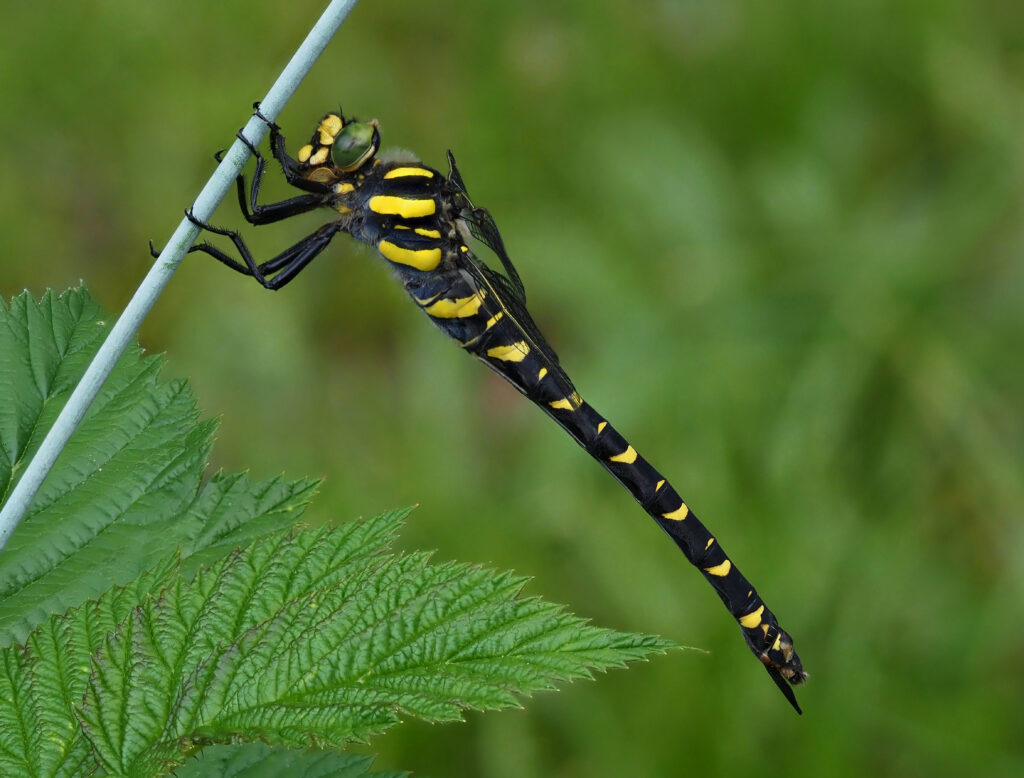
Despite the name of the species, it is far from ordinary - on the contrary, its appearance is very bright. This is the only dragonfly species in Latvia, whose entire body is black with yellow spots. The body length of the golden-ringed dragonfly is 74-85 mm, the eyes are green, meeting only at one point in the middle.
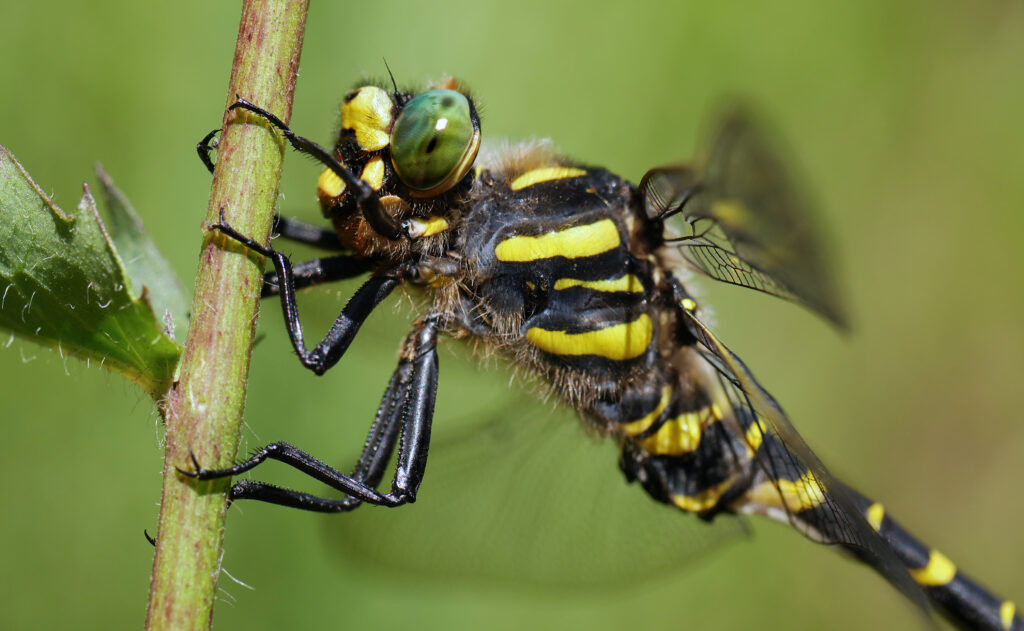
The golden-ringed dragonfly lays eggs in water where they develop for 2-4 weeks. Larvae live in stagnant freshwater habitats, and both larvae and adult dragonflies are carnivores that feed largely on a variety of invertebrates. In Latvia, these dragonflies inhabit streams and small rivers (1-10m wide) with clean water. The watercourses chosen by the species are usually located in the forest, so it's rarely found outside the forest.
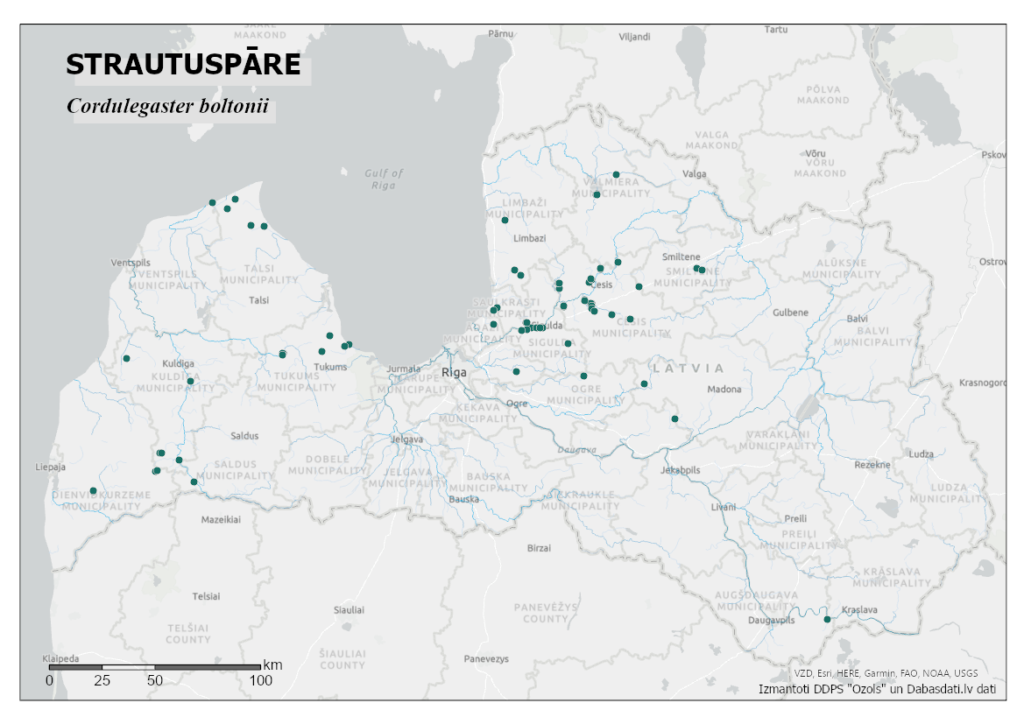
In Latvia, this beautiful species is threatened by the cleaning of forest watercourses, ditches and drains, if the natural elements characteristic of watercourses (pebbles, boulders and their collections in the watercourse bed) are not preserved. The dragonfly can also be negatively affected by beaver activity, which results in increased water temperatures and reduced oxygen levels in water bodies. The species is also negatively affected by increased droughts as a result of climate change, which harms both the dragonfly and the species it consumes for food.
The traveling photo exhibition "Green Treasures", created as part of the LIFE FOR SPECIES project, is on view at "AKROPOLE Rīga" until June 14.
Every visitor has the opportunity to get acquainted with the diversity of Latvia's nature, as well as the possible actions to preserve biological diversity.
Beautiful, interesting and educational - visit the photo exhibition from May 29 to June 14 in the "AKROPOLE Rīga" event area, between entrances A and F.
We would like to remind you that in the first month of the exhibition, any visitor could vote for three pictures, choosing their favorites. Voting activity and competition were very fierce, so when choosing the winners, in case of equal points, preference was given to those photographers who had not previously received the jury evaluation awards.
Results of the exhibition visitors' vote:
🥇 1. place: Karīna Dukule-Jakušenoka; Photo: Tetrao urogallus
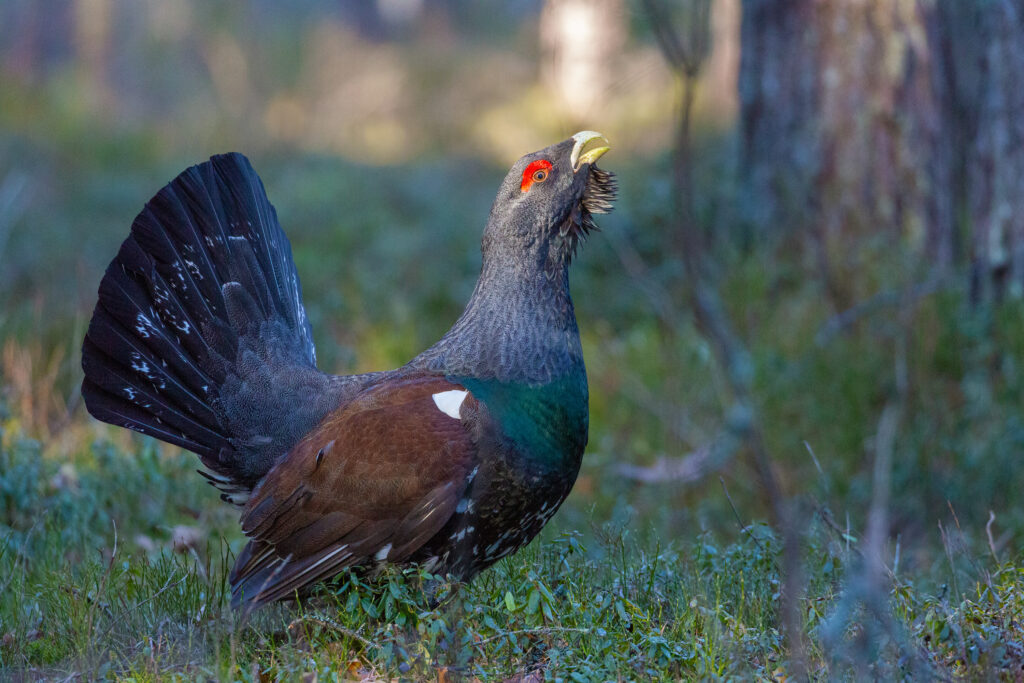
🥈 2. place: Vilnis Zoldners; Photo Halichoerus grypus
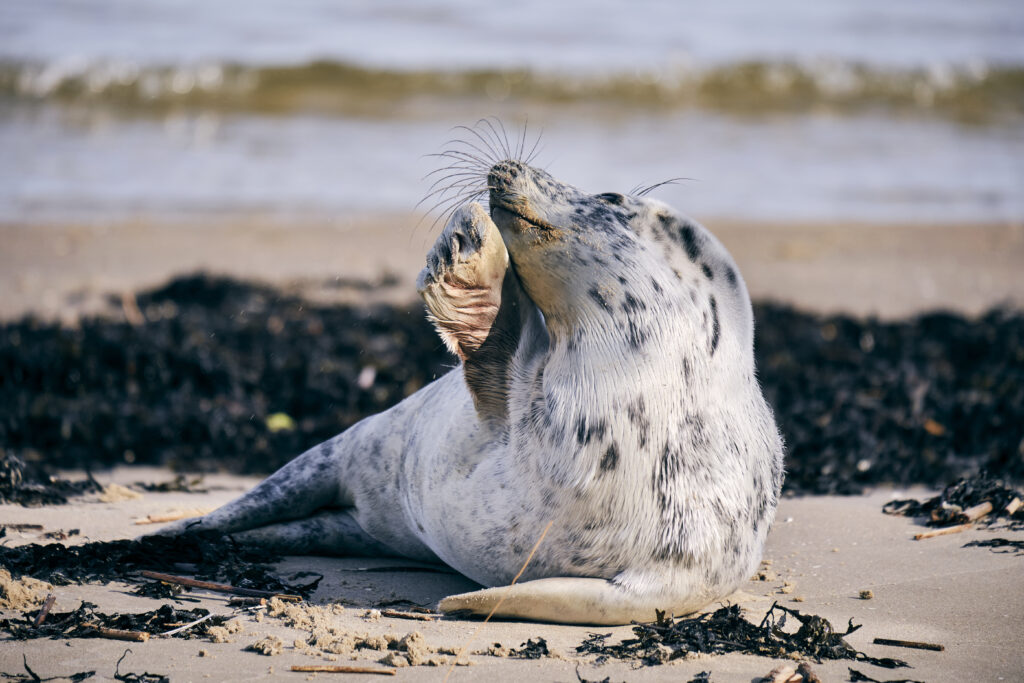
🥉 3. place: Lauma Ķeire; Photo: Hyla arborea
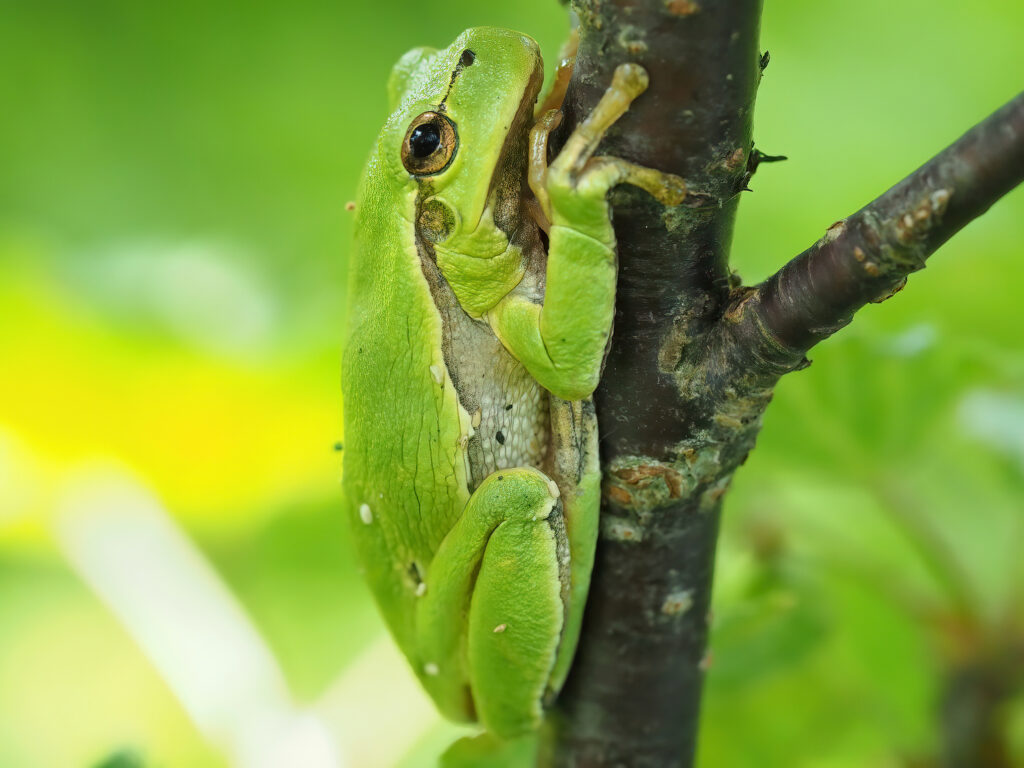
We would like to express our great gratitude to every enthusiast who has dedicated his time to capturing nature's values and diversity of species. We hope that the photo contest was a valuable encouragement to go out into nature and get to know the diversity of species in Latvia.
Within the LIFE FOR SPECIES project (Endangered species in Latvia: improved knowledge and capacity, information circulation and understanding) in the period from 2021. until 2023 in April, an evaluation of the state of invertebrates species and determination of the risk level of species extinction was carried out using the methodology and criteria developed by the International Union for the Conservation of Nature and Natural Resources (IUCN, https://www.iucnredlist.org/, https://sarkanagramata.lu.lv/par -project/materials/). The activities were carried out within the project B.1 activity "Re-evaluation of the status of species protection and preparation of the list of endangered species using IUCN criteria".
In order to introduce the interested parties to the preliminary results of the evaluation of invertebrate species, it is planned to organize a public meeting on June 9 at 10:00 Riga time (on Zoom).
It will consist of:
Estimated meeting length: approximately 3 hours.
To participate in the meeting, please fill out the application by 6th of June: https://forms.gle/gYemxg3KN3cjC4qdA
A link to the meeting will be sent to the email you provided before the meeting.
317 invertebrate species were selected and evaluated in the project. The results are available here:
B1_Bezmugurkaulnieku izvērtējumi
We invite anyone who is interested in participating, to read the assessments and send comments and questions before the meeting by writing to the email provided below:
At a time when spring is gradually replaced by summer, let's highlight one of the harbingers of spring - Bog Beacon (Mitrula paludosa). This bright mushroom begins to appear in March, but the best chance to see it is in May and June.
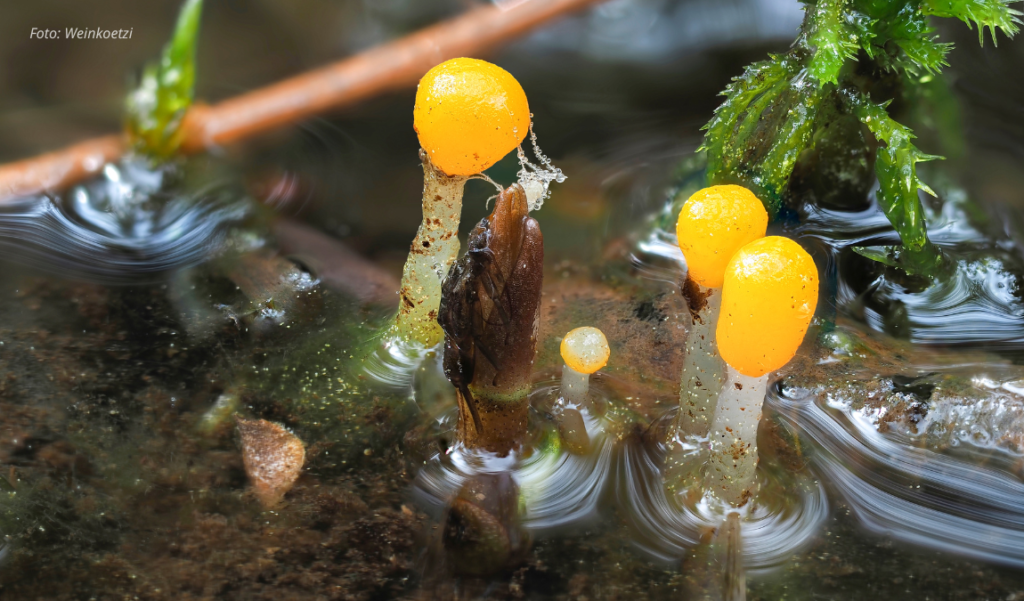
Bog beacon in nature plays the role of a processor - a small fungus feeds on rotting leaves and stems, helping to break them down into a form that other plants can easily use for food.
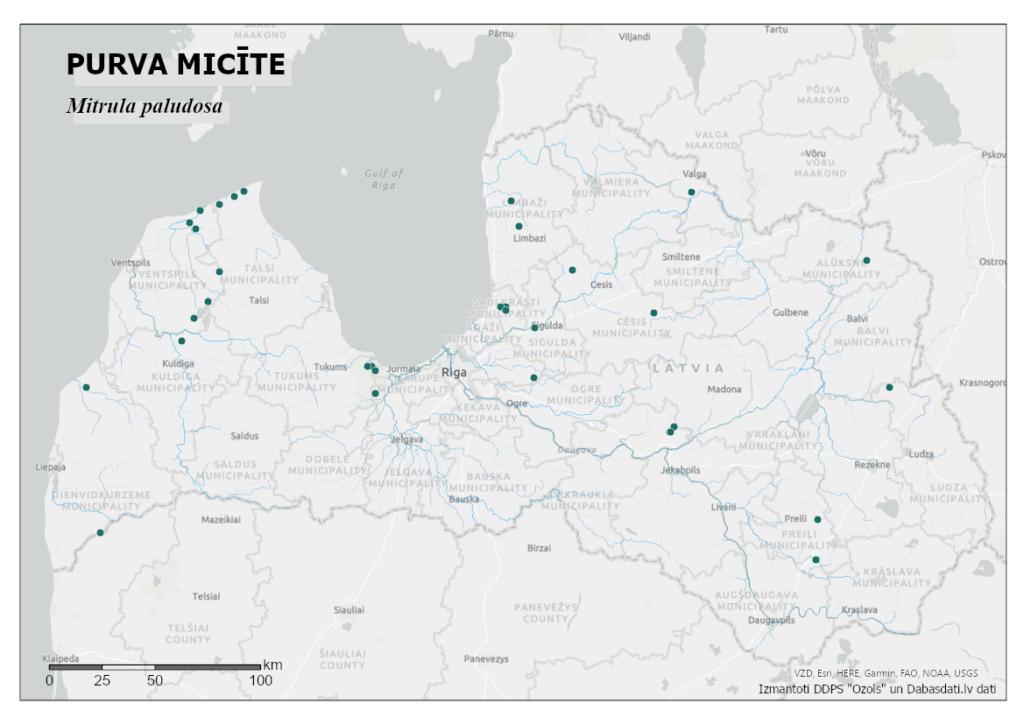
In Latvia, the fungus is relatively rare and can mostly be found in wet forests, swamps, ditches, stagnant or slow-flowing water on plant remains.
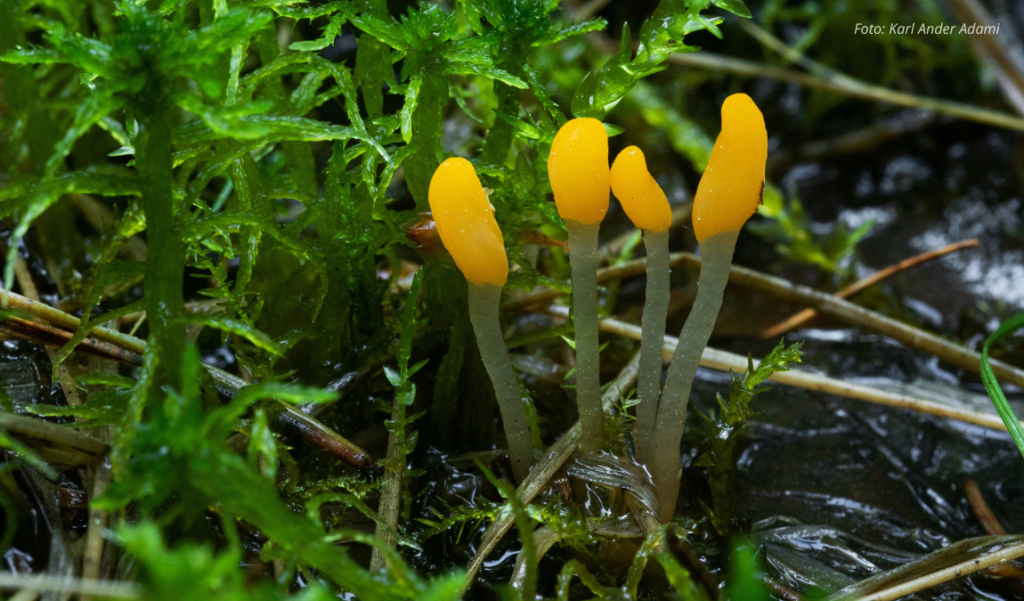
However, when you manage to find the mushroom, it is relatively easy to recognize - the top of its fruiting body is mace-shaped, smooth and yellow. Stem 2-3 cm long and 2-3 mm thick, fragile, white, with a pink tint.
Sources: Latvijas Daba: sugu enciklopēdija. sēnes. [tiešsaiste]. Pieejams: https://www.latvijasdaba.lv/sēnes/